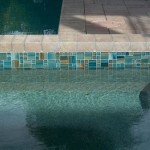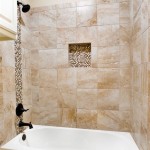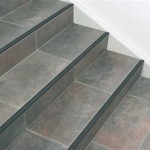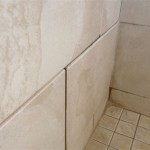Making A Statement With White Granite Tile Flooring: Pros And Cons
White granite tile flooring offers a sophisticated and bright aesthetic that can transform any space. Its clean and timeless appearance makes it a popular choice for homeowners and designers alike. However, like any flooring option, white granite tiles come with their own set of advantages and disadvantages. A careful consideration of these factors is essential before making a final decision regarding installation.
Granite is an igneous rock formed from slowly cooling magma deep beneath the Earth's surface. This slow cooling process allows for the formation of large crystals, giving granite its characteristic speckled appearance. The mineral composition of granite varies, leading to a diverse range of colors and patterns. White granite, specifically, is typically characterized by the dominance of lighter-colored minerals such as quartz and feldspar, with smaller amounts of darker minerals like mica scattered throughout. The presence and proportion of these minerals contribute to the unique visual character of each slab of granite.
The process of turning raw granite into tiles involves quarrying, cutting, polishing, and sealing the stone. Quarrying extracts large blocks of granite from the earth. These blocks are then transported to processing facilities where they are cut into slabs using diamond-tipped saws. The slabs are further cut into tiles of various sizes and thicknesses. Polishing enhances the natural beauty of the granite, bringing out its color and texture. Finally, a sealant is applied to protect the tile from stains and water damage. This manufacturing process contributes to the durability and longevity associated with granite tile flooring.
The appeal of white granite extends beyond its aesthetic qualities. Granite is known for its inherent strength and resistance to wear and tear. This makes it a suitable choice for high-traffic areas in both residential and commercial settings. Furthermore, granite is a natural material, appealing to those seeking environmentally conscious building materials. These combined factors contribute to the lasting popularity of granite as a flooring option.
Aesthetic Appeal and Design Versatility
One of the primary draws of white granite tile flooring is its bright and clean aesthetic. White reflects light, making rooms appear larger and more open. This is particularly beneficial in smaller spaces or rooms with limited natural light. The neutrality of white also allows it to complement a wide variety of design styles, from minimalist and modern to traditional and classic. It provides a blank canvas that allows other design elements, such as furniture, artwork, and wall colors, to take center stage.
The inherent variations in granite, even within the same batch of white granite tiles, add to its visual appeal. The subtle patterns and color variations create a sense of depth and texture that is not found in uniform flooring materials. This natural variation ensures that each floor is unique, adding character and personality to the space. The speckled appearance of granite, with its mix of light and dark minerals, also helps to camouflage dirt and minor imperfections, making it easier to maintain a clean appearance.
White granite tiles are available in a range of sizes and shapes, offering further design flexibility. Larger tiles can create a more seamless and modern look, while smaller tiles can be used to create intricate patterns and designs. Rectangular tiles can be arranged in various orientations to alter the perceived dimensions of a room. The flexibility in size and shape allows homeowners and designers to customize the flooring to suit their specific needs and aesthetic preferences.
Furthermore, white granite can be paired with other materials and colors to create visually striking contrasts. Dark grout lines against white tiles can define the individual tiles and create a graphic effect. Combining white granite with wood elements, such as cabinets or furniture, can add warmth and texture to the space. The versatility of white granite makes it a suitable choice for a wide range of design applications.
Durability and Maintenance Considerations
Granite is renowned for its durability and resistance to wear and tear. It is a very hard and dense material, making it resistant to scratches, chips, and stains. This durability makes it a suitable choice for high-traffic areas such as kitchens, hallways, and entryways. Properly installed and maintained granite flooring can last for decades, making it a long-term investment in the home.
Although granite is naturally resistant to stains, it is porous and can absorb liquids if not properly sealed. Sealing the granite tiles creates a protective barrier that prevents liquids from penetrating the surface, minimizing the risk of staining. Regular resealing, typically every one to two years depending on the type of sealant and the level of traffic, is necessary to maintain this protection. A high-quality sealant is crucial for protecting white granite, as stains are more visible on light-colored surfaces.
Daily maintenance of white granite tile flooring is relatively simple. Regular sweeping or vacuuming removes loose dirt and debris. Damp mopping with a pH-neutral cleaner is sufficient for general cleaning. Avoid using abrasive cleaners or harsh chemicals, as these can damage the sealant and dull the surface of the granite. Promptly wiping up spills is also important to prevent staining, especially from acidic substances like lemon juice or vinegar.
While granite is resistant to scratches, it is still possible to scratch the surface with sharp objects or abrasive materials. Using mats or rugs in high-traffic areas and under furniture can help to protect the flooring from scratches. Additionally, avoid dragging heavy objects across the floor, as this can also cause scratches or chips. With proper care and maintenance, white granite tile flooring can maintain its beauty and durability for many years.
Installation Costs and Potential Drawbacks
The installation cost of white granite tile flooring can be higher compared to some other flooring options, such as vinyl or laminate. This is due to the cost of the materials themselves and the labor involved in installing granite. Granite tiles are typically more expensive than synthetic materials, and the installation process requires specialized tools and expertise. Proper subfloor preparation is also crucial for a successful installation, which can add to the overall cost.
Granite is a heavy material, which can pose challenges during installation. The subfloor must be strong enough to support the weight of the granite tiles. In some cases, additional reinforcement of the subfloor may be necessary, which can add to the expense. Handling and cutting granite also requires specialized equipment and techniques, which is best left to experienced professionals.
White granite, due to its light color, can be more prone to showing dirt and stains compared to darker flooring options. While granite is relatively easy to clean, regular cleaning is necessary to maintain its pristine appearance. This can be a concern for homeowners with children or pets, or in high-traffic areas where dirt and spills are more common. Choosing a white granite with a more pronounced pattern can help to camouflage dirt and imperfections.
Another potential drawback is that granite can be cold to the touch, especially in colder climates. This can be mitigated by installing radiant heating under the flooring. Radiant heating provides a comfortable and even heat distribution, making the granite floor more comfortable to walk on during the winter months. However, the installation of radiant heating will add to the overall cost of the project.
Finally, while granite is generally a consistent material, there can be variations in color and pattern between different batches of tiles. It is important to carefully inspect the tiles before installation to ensure that they are consistent with each other. It is also advisable to purchase extra tiles to allow for cuts and waste, and to have a reserve in case of future repairs. These variations are a natural characteristic of granite and contribute to its unique beauty, but it's important to be aware of them when planning the installation.

Which Is Better Granite Or Marble Flooring Ceraite
What Are The Advantages And Disadvantages Of Granite Tiles Quora
.webp?strip=all)
Which Is Better Granite Or Marble Flooring Skytouch Ceramics
:max_bytes(150000):strip_icc()/marble-flooring-pros-and-cons-1314701-hero-5a5fae7b62fc4646a573c43ca52b521f.jpg?strip=all)
Marble Flooring Pros And Cons

Which Is Better Granite Or Marble Flooring Skytouch Ceramics

Which Is Better Granite Or Marble Flooring Ceraite

Which Is Better Granite Or Marble Flooring Skytouch Ceramics

30 Tile Flooring Ideas With Pros And Cons Digsdigs

What Are The Pros And Cons Of Porcelain Tile Lx Hausys

30 Tile Flooring Ideas With Pros And Cons Digsdigs
Related Posts








